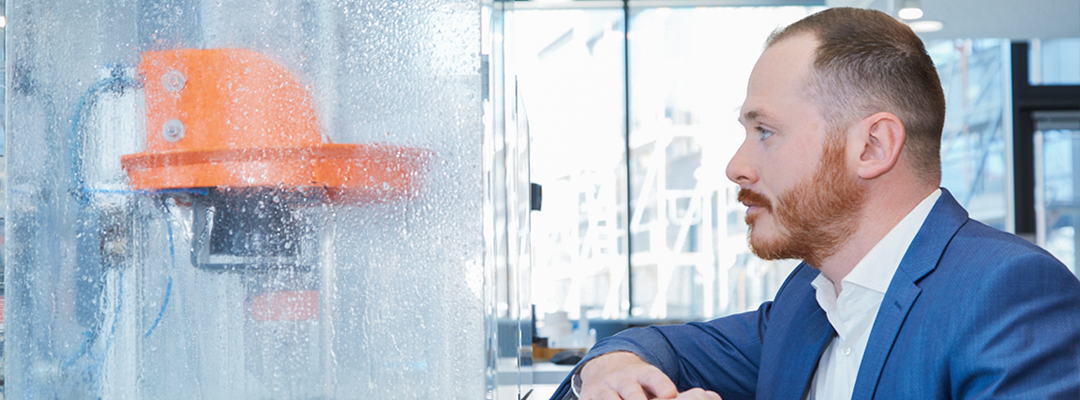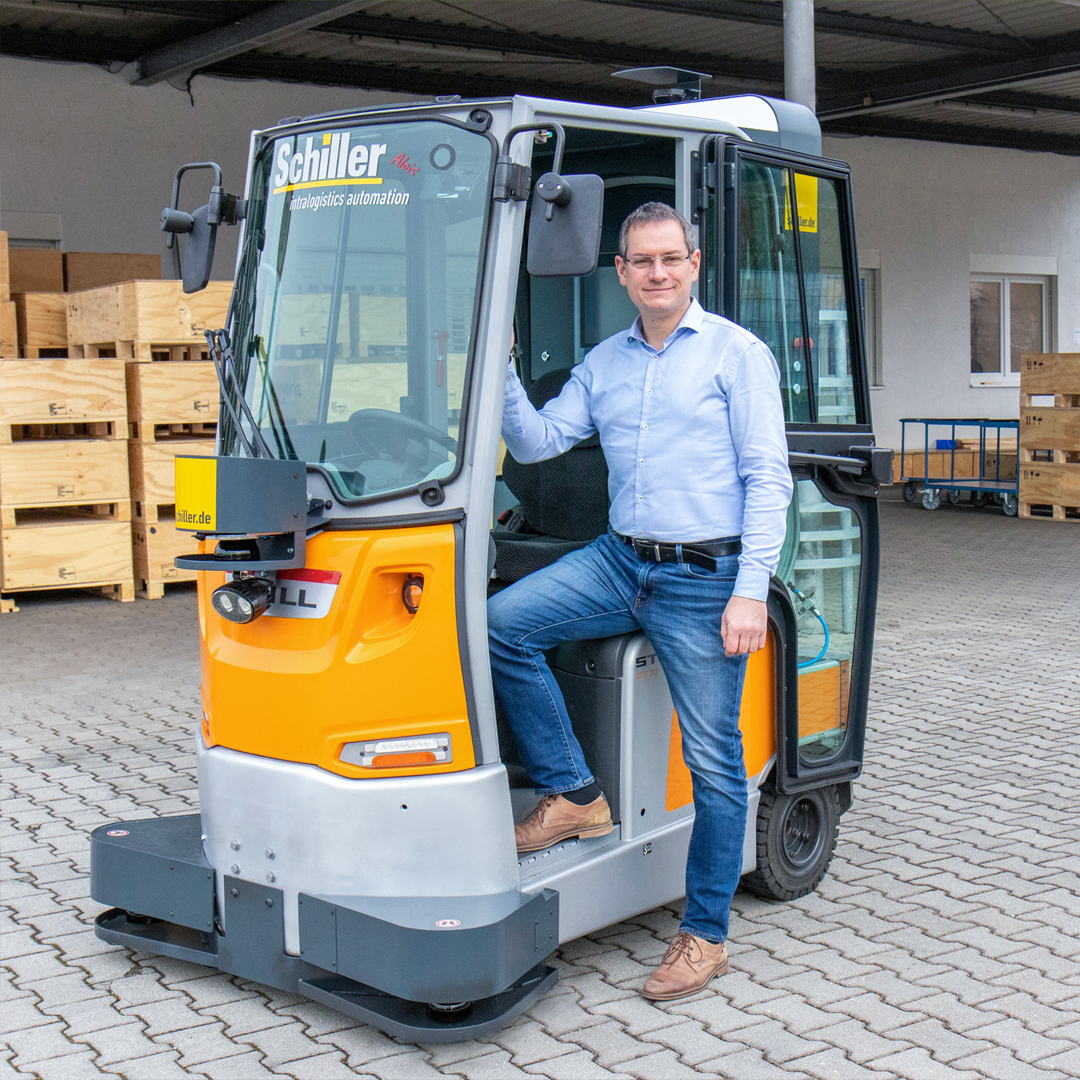
Magazine for the Annual Report
Cooperation leads to innovation

Intralogistics that seamlessly and comprehensively master all the tasks in a particular production area could become reality in the near future. SICK and Schiller Automatisierungstechnik GmbH are working together on a platform solution for this purpose.
The aim could hardly be more ambitious: Nothing less than an autonomous modular intralogistical fleet of picking robots, forklift trucks, and a free-driving tugger train which together cover all intralogistical needs – and which can also travel on outdoor routes. This project represents the high point of the collaboration that has taken place between SICK AG and Schiller Automatisierungstechnik GmbH (based in Osterhofen in Bavaria) up to now.
Collaboration started in 2016. Peter Stoiber, Manager Mobile Robotics at Schiller, explains, “A customer in the automotive sector asked whether we could deliver autonomous and freely moving tugger trains (i.e. without any lane guidance) that could travel stretches up to 1,000 meters long in factory halls. We had no previous experience in this field but we definitely wanted to bring the project to a successful close.” By a happy coincidence, Peter Stoiber came across the contour-based localization solution that SICK was just developing at the time: “We at SICK were also looking for a partner with access to industrial use who would be prepared to test this solution with us in quasi practical operation,” says Michael Badeja, Product Manager Safe Outdoor Automation at SICK. So this contact provided a win-win situation that could hardly be more suitable.
Self-driving tugger trains
The two partners worked on a solution together. The aim was to enable tugger trains to transport production goods to the next deployment location in up to four trailers (i.e. ten meters long with a trailer load of about three tonnes) and at up to ten kilometers per hour without any need for lane markings. The train’s autonomous navigation system uses the laser signals of NAV310 2D LiDAR sensors from SICK: An algorithm continuously compares the distances derived from current scanning data against the reference map, providing the vehicle’s current position and orientation angle. In addition, SICK’s microScan3 safety laser scanner prevents collisions – a risk that is considerably higher for free-driving AGVs than when they follow lane guides. The tugger train automatically brakes when a person or object is detected. The complete solution can be retrofitted on existing tugger trains, whereby it is still possible to use them with a driver. So this is an attractive solution that enables new applications – for example dynamic routing according to delivery priority.
The next milestone in this fruitful collaboration took shape in late 2018. The same customer’s tugger train was now also to travel along additional outdoor stretches and complete journeys of several hundred meters between two production halls – another completely new challenge. And there was another fortunate coincidence in the collaboration: At this time, SICK had just started marketing the world’s first safety laser scanner for outdoor use under the product name outdoorScan3. “This product first enabled us to consider going outdoors at all,” reports Peter Stoiber.
The outdoor scanner’s performance is remarkable: “Sun, fog, rain, snow, ice, wind – none of this can be permitted to impair the functionality and reliability of the automated system,” says Michael Badeja. “A successful solution must also be safe and productive outdoors. There’s a very great amount of expertise involved in this.”
Reliable outdoors, too
So the cross-company team went into development mode again: Experts from Schiller Mobile Robotics and mojin robotics – founded in 2015 as a spin-off from the Fraunhofer Institute for Manufacturing Engineering and Automation (IPA), and a Schiller subsidiary since late 2020 – worked with SICK developers to further optimize sensor performance in poor environmental and weather conditions for special application on the free-driving tugger train.
One detail shows how pragmatic and practical the collaboration was: It turned out that spray that hit the sensors from below was a particular challenge: “Fine drops, for example from a preceding vehicle, act as tiny lenses on the sensor and make its job difficult,” explains Michael Badeja. “To overcome this problem, we worked together to develop an automatic cleaning function with compressed air and water,” says Peter Stoiber. “In principle it works like a kind of wiper blade using air.” This solution also had to prove itself quickly in practical use: The autonomous outdoor tugger train is now running at a well-known carmaker – 100 percent safe and with high availability in real field use.

Platform solution in sight
But this special collaboration is by no means over: Schiller is currently working on a platform solution for a comprehensive ‘gap-free’ intralogistical vehicle fleet that covers every eventuality – whether indoors, outdoors, free-driving or lane-guided. “Our vision is a complete scalable and flexible system made up of smart individual components.
To achieve this, we need a chain of autonomous vehicles that undertake different transport tasks individually or in a group and cover the logistics chain seamlessly – whether indoors or outdoors,” explains Peter Stoiber. The next milestones on this path are an autonomous forklift truck and a picking robot. SICK is providing support with its extensive sensor expertise.
This shows that the two partners are not afraid of major objectives because they know what they are capable of.
“The high level of design complexity, the standards requiring compliance, the pressure of rapidly delivering a solution for the customer – all this made our previous projects risky. But we succeeded,” says Michael Badeja. “And both companies dared enter territory that was not their original core business,” adds Peter Stoiber. “That also required courage.” The two of them agree that the key to success is trust and the readiness to undertake advance investments for each other. The ideal prerequisites for working together to create a solution that could revolutionize the extremely dynamic intralogistics segment.







